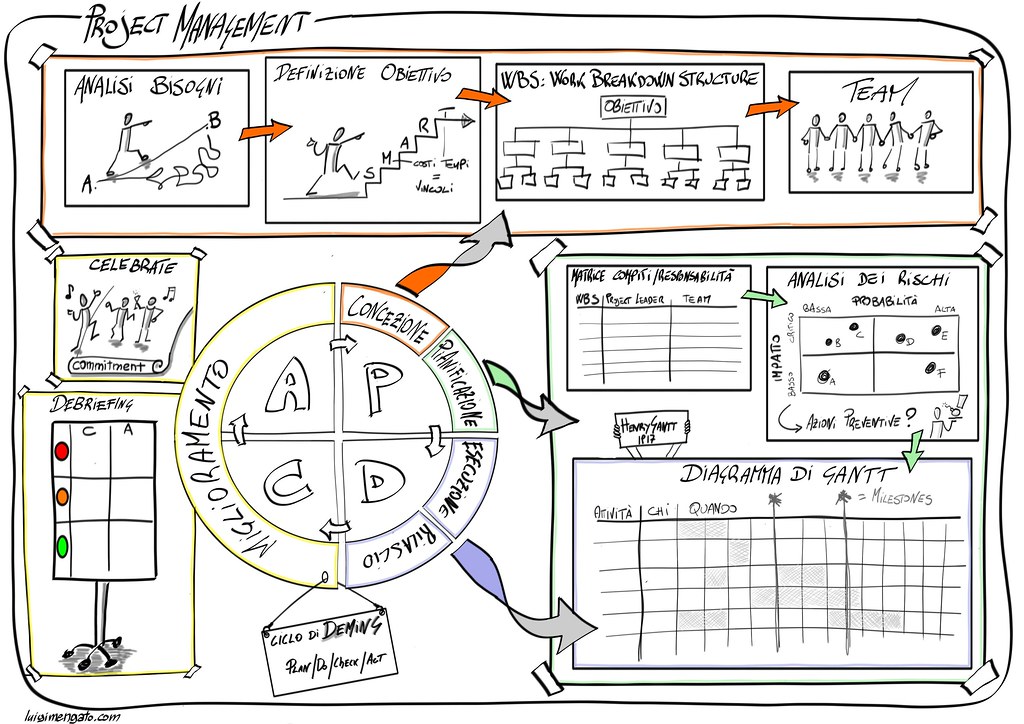
Project Management methodologies are frameworks and processes that guide project managers and teams in executing and controlling their projects. Each methodology offers a unique approach with specific guidelines, tools, and techniques. With so many methodologies available, choosing the right one can be challenging. Here’s a dive into the top 20 project management methodologies to help you decide which one aligns best with your project’s needs.
1. Waterfall
The Waterfall model is one of the earliest methodologies, characterized by a linear and sequential approach. Each phase must be completed before moving to the next, making it easy to manage but less flexible.
2. Agile
Agile methodology advocates adaptability and collaboration. Iterative processes and feedback loops allow teams to make quick changes during the project. It’s popular in software development but applicable in other domains.
3. Scrum
A subset of Agile, Scrum divides projects into small parts called sprints, usually lasting 2-4 weeks. The Scrum Master, Product Owner, and the Development Team work collaboratively, making regular reviews and adjustments.
4. Kanban
Inspired by Toyota’s JIT (Just-In-Time) system, Kanban focuses on visualizing tasks using boards and cards. It improves efficiency by limiting work in progress and highlights bottlenecks in real-time.
5. Lean
Originating from manufacturing, Lean aims to improve efficiency and deliver value to the end customer. It emphasizes removing wasteful activities and focusing on streamlining the process.
6. PRINCE2 (Projects IN Controlled Environments)
PRINCE2 provides a detailed framework, focusing on organized start, middle, and end stages. It defines roles and responsibilities, ensuring everyone knows their tasks.
7. Critical Path Method (CPM)
CPM identifies critical and non-critical tasks, focusing on optimizing timelines for the former. By calculating the shortest time to complete essential tasks, projects stay on track.
8. Critical Chain Project Management (CCPM)
CCPM, a spin-off of CPM, emphasizes resource allocation. It considers resource constraints and aims to keep resources levelled and projects on schedule.
9. Six Sigma
Six Sigma focuses on improving the quality of the end product by identifying and removing defects. It uses statistical methods to achieve process enhancements and variations reduction.
10. PMI’s PMBOK (Project Management Body of Knowledge)
Not a methodology per se, but a guide. PMBOK encompasses best practices and standards for project management, covering processes, tools, and techniques.
11. ITIL (Information Technology Infrastructure Library)
Focused on IT services management, ITIL emphasizes aligning IT services with business needs. It provides a set of practices for IT service management (ITSM).
12. Extreme Programming (XP)
A subset of Agile, XP emphasizes customer satisfaction. It advocates frequent releases to improve productivity and introduce checkpoints to align the project with customer requirements.
13. Adaptive Project Framework (APF)
Recognizing that every project is unique, APF focuses on adaptability. It allows project managers to adjust project scope and adapt to any changes.
14. Event Chain Methodology
It focuses on managing events and event chains affecting project schedules. By identifying and mitigating these events, it ensures projects stay on track.
15. Crystal
Crystal is a family of Agile methodologies that emphasize team communication, skills, and talents. It also focuses on incremental deliveries and iterative development.
16. Feature Driven Development (FDD)
Primarily used in software development, FDD breaks projects into specific, well-defined features. It emphasizes design and building phases.
17. Dynamic Systems Development Method (DSDM)
Another member of the Agile family, DSDM focuses on full project lifecycle management. It prioritizes requirements and emphasizes iterative and incremental delivery.
18. Joint Application Development (JAD)
JAD emphasizes collaboration between client groups and developers. Through facilitated workshops, it allows for faster development and clear requirements gathering.
19. Rational Unified Process (RUP)
RUP divides the project life cycle into four phases: inception, elaboration, construction, and transition. Each phase is precisely defined with activities and milestones.
20. Spiral
A risk-driven process model, Spiral divides the project into smaller parts, each forming a spiral. It allows for multiple rounds of refinement, ensuring risks are identified and addressed early.
Summary
Selecting the right project management methodology can dictate the success of a project. By understanding the core principles and objectives of each method, project managers can align their strategies with project needs, stakeholder expectations, and organizational goals. Whether prioritizing flexibility, risk management, efficiency, or stakeholder involvement, there’s a methodology tailored to meet those requirements.